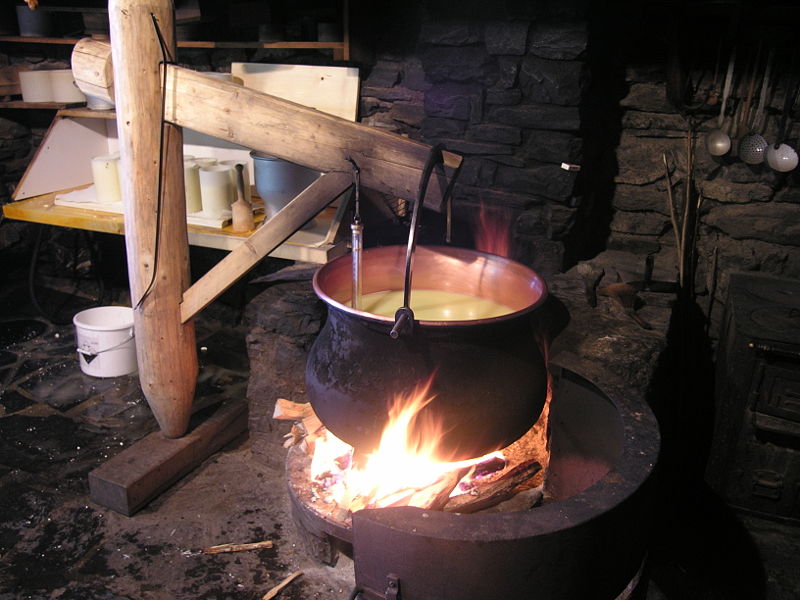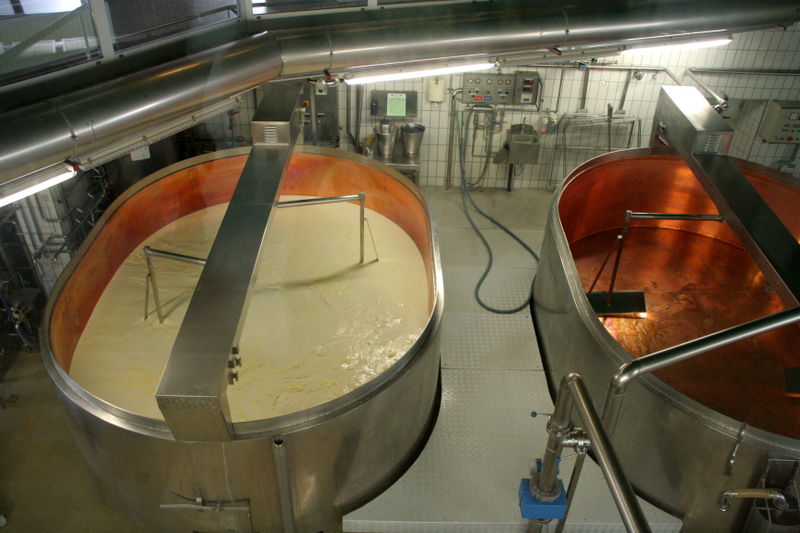The only required step in making cheese is separating the milk into solid curds and liquid whey. This is done by adding rennet and acidifying the milk. This happens when you add an acid like vinegar (paneer, queso fresco) or starter bacteria. These starter bacteria convert milk sugars into lactic acid. The same bacteria also play a role in the eventual flavor of aged cheeses. Most cheeses are made with starter bacteria from the Lactococci, Lactobacilli, or Streptococci families.
Rennet makes cheese into a stronger and a more rubbery gel than the acidic coagulation alone. In general, softer, smaller, fresher cheeses are curdled with a greater proportion of acid to rennet than harder, larger, longer-aged varieties.
Some soft cheeses aafter being acidifed are essentially complete: they are drained, salted, and packaged. For the rest, the next process (curd) cuts it into small cubes. This allows water to drain from the individual pieces of curd.
Some hard cheeses are then heated to temperatures from 35 °C–55 °C (100 °F–130 °F). This forces more whey from the cut curd. It also changes the taste of the finished cheese. Cheeses that are heated to the higher temperatures are usually made bacteria which survive this step—either lactobacilli or streptococci.
Salt has more roles than just adding a salty flavor: it preserves cheese from spoiling, draws moisture from the curd, and firms up a cheese’s texture. Most cheeses have the salt mixed directly into the curds. A number of other techniques can be employed to change the cheese's final texture and flavor. Some examples: Cheddaring: (Cheddar, other English cheeses) The cut curd is repeatedly piled up, pushing more moisture away. The curd is also mixed for a long period of time, taking the sharp edges off the cut curd pieces and influencing the final product's texture.
Stretching: (Mozzarella, Provolone) The curd is stretched and kneaded in hot water, developing a stringy, fibrous body.
Washing: (Edam, Gouda, Colby) The curd is washed in warm water, lowering its acidity and making for a milder-tasting cheese.
Pressure makes the moisture go away, so the harder the cheese the more pressured it has been. By applying that pressure the final shape of the cheese appears.
A newborn cheese is usually salty yet bland in flavor. This aging period can last from a few days to several years. As a cheese ages, microbes and enzymes transform its texture and intensify its flavor. Some cheeses have molds or bacteria added to them intentionally. In traditional cheese making,the microbes are already in the room and are let to set down on the cheese.


information from: www.wikipedia.org